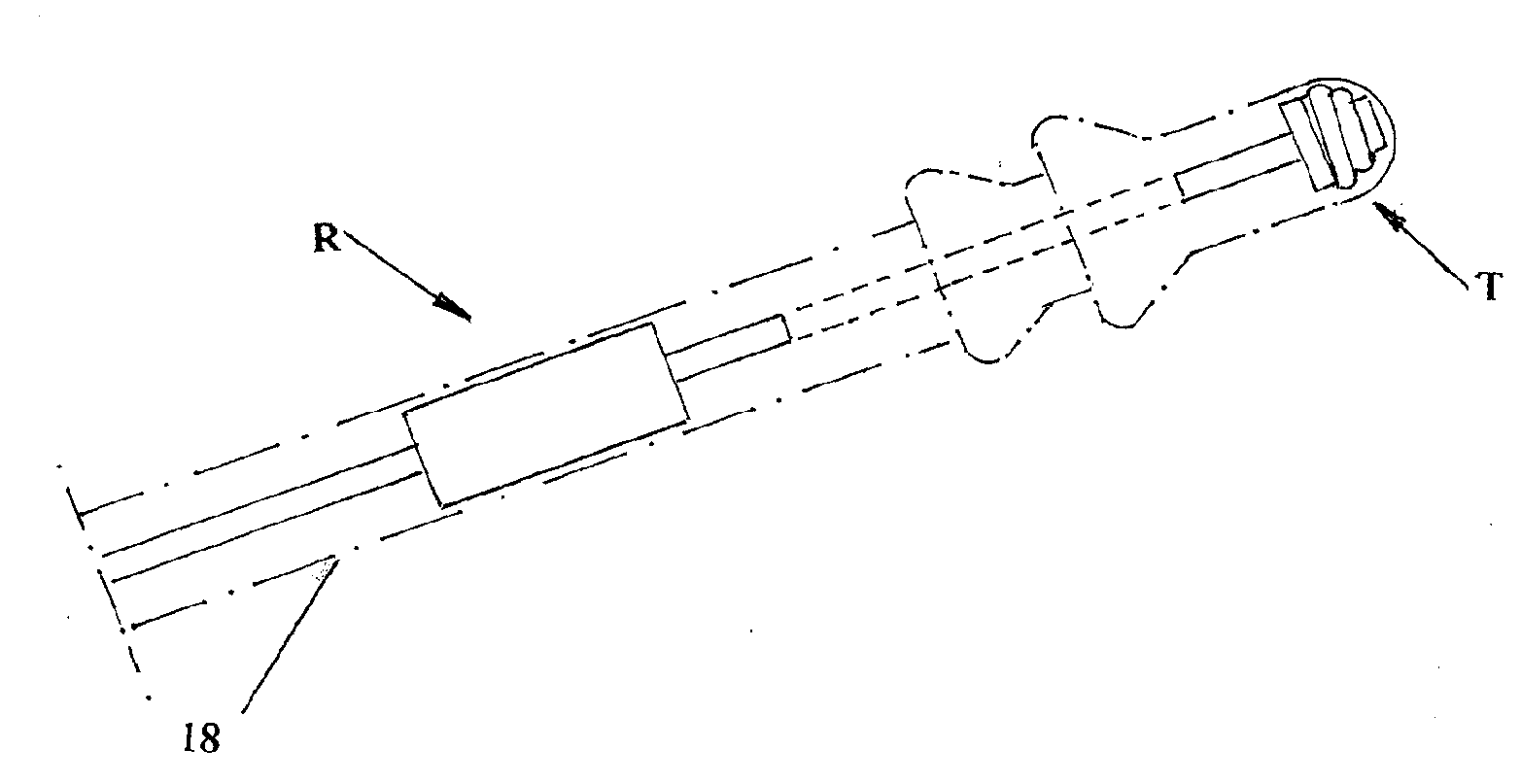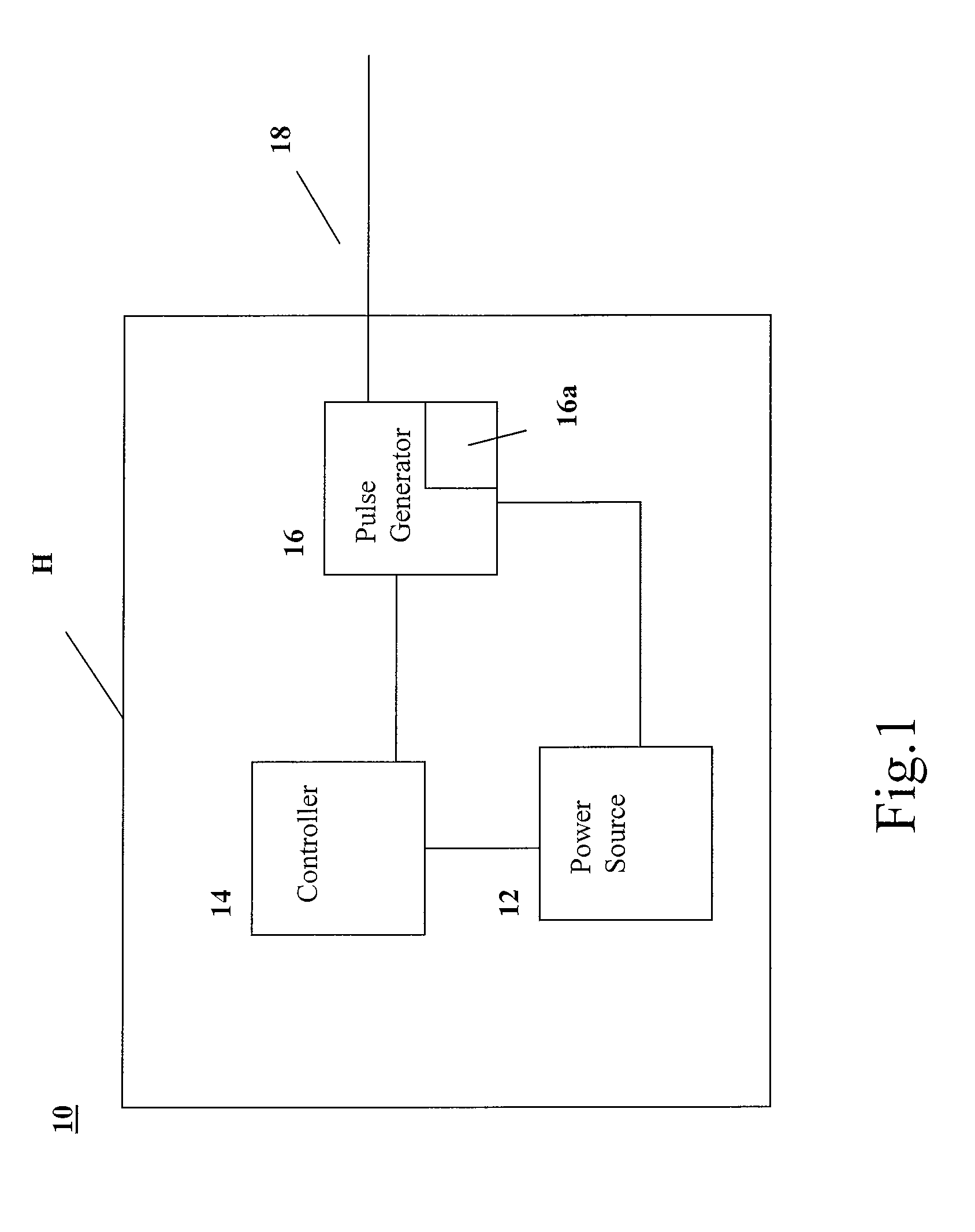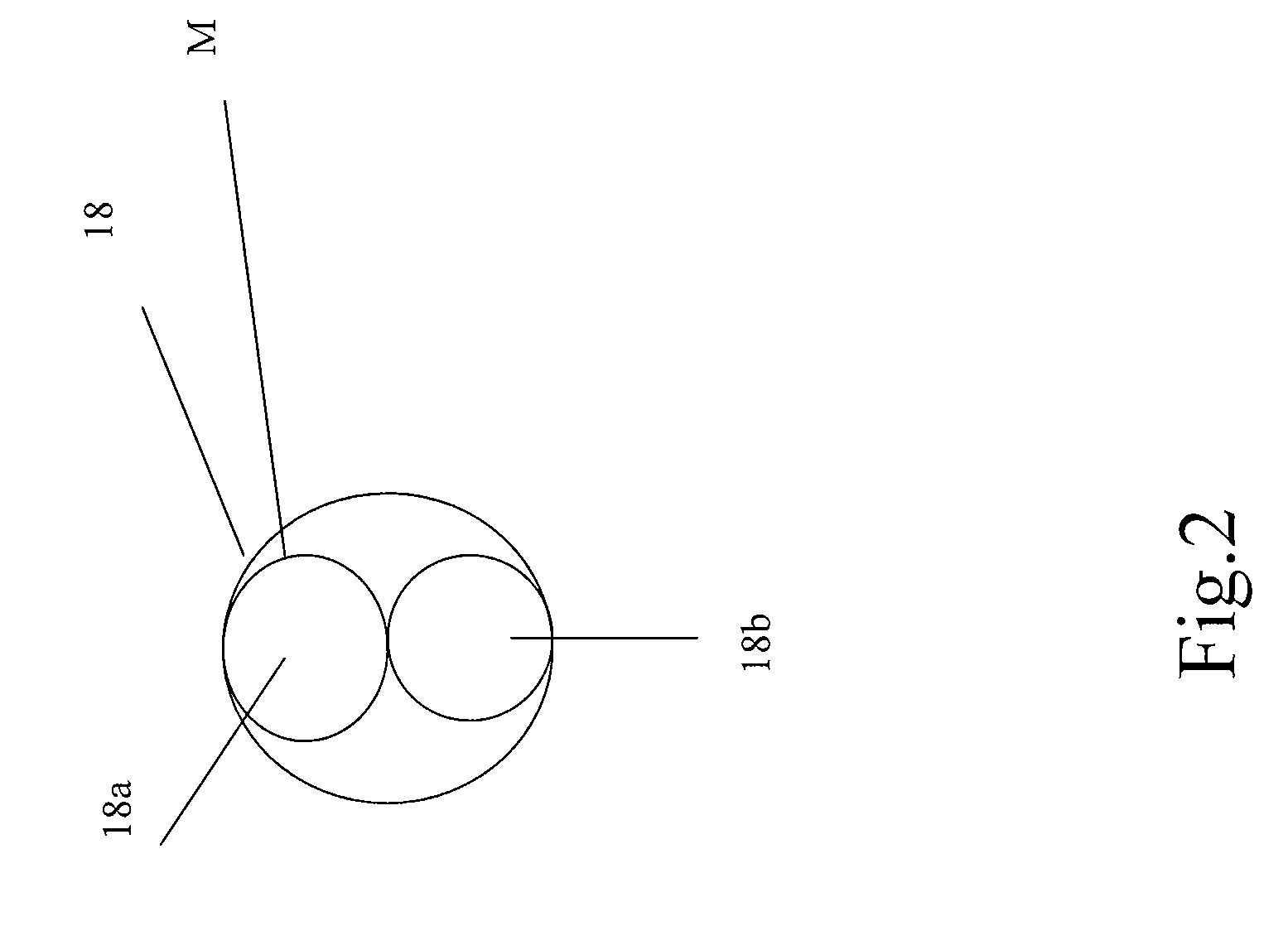Redundant pacing system with leaded and leadless pacing
a pacing system and leadless technology, applied in the field of pacing systems, can solve the problems of failure of pacing devices to provide required pacing signals, failure of pacing devices at any of several links in the chain of elements of the devices, etc., and achieve the effect of stimulating the heart of users
- Summary
- Abstract
- Description
- Claims
- Application Information
AI Technical Summary
Benefits of technology
Problems solved by technology
Method used
Image
Examples
Embodiment Construction
In a preferred embodiment, illustrated generally in the exemplary block diagram of FIG. 1, the pacing device 10 of the present application includes a power source 12, a controller 14 and a pulse generator 16. The pulse generator 16 includes terminals that are connected to the lead 18, which provides the pacing signals from the pulse generator to the user's heart. In addition, the lead 18 may be used to convey information from the heart to the controller 14, via the pulse generator 16, for example. The controller 14 may use this information in controlling the pulse generator 16. The system 10 of FIG. 1, however also provides for a second mode of operation where at least pacing information is transmitted wirelessly to the heart such that pacing will occur even where there is a fault in the lead 18, or the connection between the lead and the pulse generator 16. For this purpose, the pulse generator 16 preferably also includes a transceiver 16a (transmitter / receiver) that is operable to...
PUM
 Login to View More
Login to View More Abstract
Description
Claims
Application Information
 Login to View More
Login to View More - R&D
- Intellectual Property
- Life Sciences
- Materials
- Tech Scout
- Unparalleled Data Quality
- Higher Quality Content
- 60% Fewer Hallucinations
Browse by: Latest US Patents, China's latest patents, Technical Efficacy Thesaurus, Application Domain, Technology Topic, Popular Technical Reports.
© 2025 PatSnap. All rights reserved.Legal|Privacy policy|Modern Slavery Act Transparency Statement|Sitemap|About US| Contact US: help@patsnap.com



